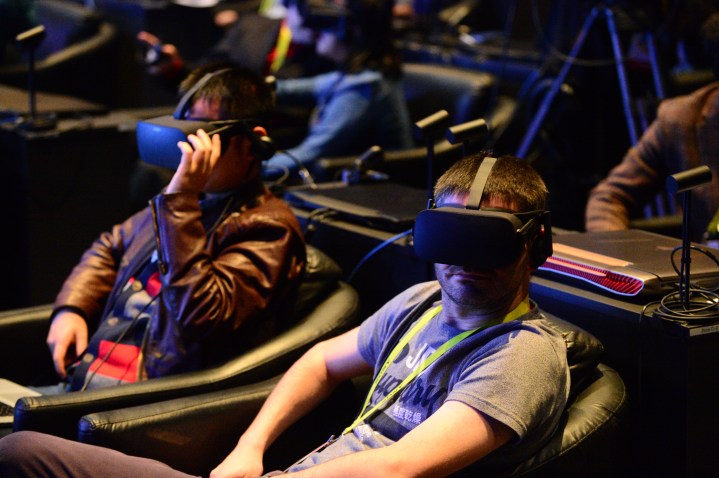
Despite age-old claims that sitting close to a screen can be bad for your eyes, virtual reality displays actually have a lot of advantages for users. The lenses in VR headsets are focused to infinity, so are arguably less strenuous on the eyes over long periods than looking at a phone or desktop display. Even so, they aren’t perfect and aren’t quite as easy to use for those who are short- or long-sighted. That’s where Stanford’s technology could come in.
The technology is called adaptive focus display and is currently undergoing trials with two different hardware solutions. The first uses liquid lenses that are controlled via a dial to adjust them for the user, while the second moves the display back and forth, closer to or farther away from the lenses.
More: The best VR headset you can buy
When combined with an eye-tracking camera within the headset, the software and hardware can react dynamically to focus on the part of the virtual world that the user is looking at. This can then blur the rest of the world to provide a natural depth of field and make it so that someone who has weak eyesight can wear a headset and see perfectly, without the need to wear corrective lenses.
There are downsides to the technology though. Moving the screen farther from the user would reduce their field of view, and unless the user is using a display that’s wider than the natural human field of view of almost 180 degrees, that would be noticeable. The system also cannot correct for astigmatism.
However, so far trials of the adaptive displays have been successful. At a trial last year where 173 participants between the ages of 21 and 64 were given a chance to try a headset using the new technology, many people found it improved the experience. Researchers did not however, provide hard numbers on how many people saw some benefit, or what impact it had on other aspects of the headset, such as its field of view.



